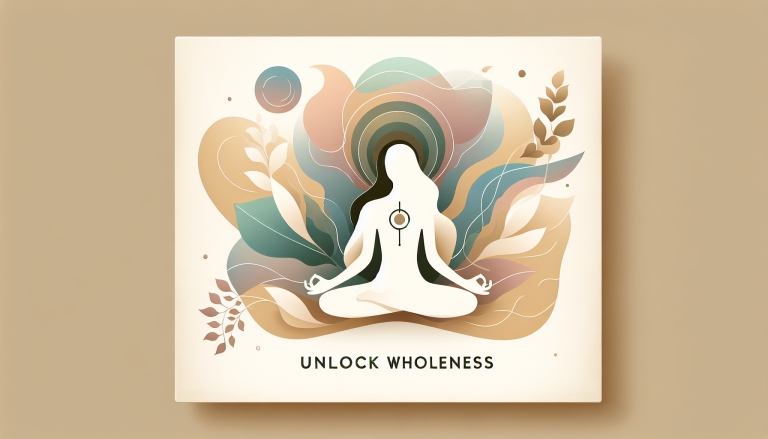Embracing Mindful Living: The Modern Path to Holistic Wellness
What if every moment held the potential for deeper well-being—and all it took was your intention to notice? Mindful living, a vibrant movement gaining momentum across the globe, invites us to unlock wholeness in a world that often feels fragmented. It’s more than meditation on a cushion: it’s a way of being alert, aware, and actively engaged with our lives, every single day. With new research illuminating the profound impacts of mindfulness on both mental and physical health, this trend has become a cornerstone of modern wellness.
From Buzzword to Daily Ritual
Just a decade ago, mindfulness might have conjured images of incense, chanting, or distant monasteries. But today, it occupies center stage at the intersection of wellness, productivity, and happiness. CEOs begin meetings with a minute of breathwork, parents and kids share mindful moments before breakfast, and even tech companies ask employees to pause and re-center. “Mindfulness is not about escaping reality,” says Dr. Jon Kabat-Zinn, originator of Mindfulness-Based Stress Reduction (MBSR). “It’s about touching life as it is, with full presence and kindness.”
The science backs up the shift. A 2023 meta-analysis published in *JAMA Internal Medicine* found that consistent mindfulness practice improved sleep quality, reduced anxiety, and lowered markers of chronic inflammation, a key risk factor for diseases ranging from heart disease to diabetes. At its core, mindful living encourages one to inhabit each moment without judgment—navigating life’s ups and downs with resilient calm rather than reflexive reaction.
The Everyday Mindful Toolkit
How can modern wellness seekers infuse mindfulness into the fabric of daily routines? The key is to “start small and start now,” as wellness coach Heather Shipley recommends. Even fleeting pauses can anchor us:
– **Mindful Mornings:** Wake up and take three deep, conscious breaths before checking your phone. Notice the sensation of sheets, the quality of light, and the mood of your mind.
– **Intentional Eating:** Savor the color, aroma, texture, and taste of your food without screens or multitasking. Slowing down meals not only improves digestion but cultivates gratitude.
– **Breath Awareness Breaks:** When stress hits, pause for a 60-second gentle focus on your breath. Inhale for four counts, exhale for six. This simple shift calms the nervous system and transforms your relationship with stress.
Real-world success stories bring these principles to life. Take Michelle, a busy architect in San Francisco. “Practicing mindful eating changed my health more than any diet. I lost weight, but more importantly, I reconnected with my body’s signals. I stopped eating out of stress and started enjoying my meals again,” she shares.
Digital Detox: Reclaiming Attention in a Hyperconnected World
Modern living means constant alerts, notifications, and scrolling—addictive stimuli vying for our precious attention. Mindful living isn’t about abandoning technology but about wielding it with awareness. Dr. Sherry Turkle, renowned sociologist and author of *Reclaiming Conversation*, emphasizes, “Technology should enhance, not replace, genuine connections and real-world presence.”
Try instituting pockets of digital rest:

– **Tech-Free Zones:** Dedicate your dining table, bedroom, or specific hours as device-free sanctuaries. Inform family and friends, and revel in the joy of undistracted togetherness.
– **Conscious Consumption:** Pause before opening apps. Ask, “What do I hope to feel after this?” Replace reflexive scrolling with activities that nourish—reading, journaling, or stepping outside.
– **Mindful Notifications:** Turn off non-essential alerts. Rely on scheduled check-ins so your brain isn’t constantly jarred out of focus.
Wellness isn’t about deprivation. It’s about recovery—giving your mind space to breathe and return to balance.
Movement as Meditation: Mindful Approaches to Physical Wellness
The connection between body and mind is inseparable—and nowhere is this more evident than through mindful movement. Traditional views of exercise as punishment or obligation are being replaced by gentler, more holistic approaches. Practices like yoga, Pilates, and tai chi have surged in popularity, inviting participants to move with awareness.
But mindful movement goes beyond formal classes. Olivia Williams, a wellness instructor in Brooklyn, describes her walks as “meditation in motion.” She shares, “I used to speed through errands, barely noticing my neighborhood. Now, I walk slowly and really soak in the world—the breeze, sights, and sounds. My stress melts away, and I feel truly alive.”
Tips for cultivating mindful physical activity:
– **Slow Down:** Whether running, cycling, or washing dishes, tune fully into the sensations of movement. Note your breath, muscle tension, and emotions.
– **Celebrate Small Wins:** Instead of measuring fitness solely by calories burned, notice shifts in energy, mood, and flexibility.
– **Honor Your Body:** Move for joy, not only for goals. If you’re tired, choose gentler options and thank your body for its efforts.
Mental Wellness: Mindfulness as an Antidote to Modern Stress
Anxiety and overwhelm aren’t signs of weakness; they’re reflections of a culture in overdrive. Mindfulness offers a kind and proven pathway to strengthen resilience and restore balance. Studies link regular mindful meditation to decreased symptoms of depression and improved cognitive function—even structural changes in the brain associated with greater empathy and creativity.
Mindfulness journaling can also promote clarity and emotional processing. Set aside five minutes at the end of each day to jot down three things you noticed or felt, without self-censorship. Over time, such practices deepen self-understanding and equip us to respond more thoughtfully to challenges.
Corporate wellness programs are catching on, with companies from Google to the World Health Organization offering mindful breaks, nature walks, and even “gratitude slack channels” to support employee mental health.
Designing Mindful Living Spaces: Home as a Wellness Sanctuary
Where we live shapes how we live. A thoughtfully arranged home can nurture calm, clarity, and health. The latest décor trends fuse beauty with wellness, emphasizing simplicity, natural light, and biophilic design—think indoor plants, wooden textures, and spaces that blur the line between indoor and outdoor.
A few actionable ideas for a mindful home:
– **Declutter Regularly:** Clear surfaces and storage areas to free mental space and reduce visual stress.
– **Create Nooks of Nourishment:** Designate a corner for reading, meditation, or tea. Fill it with items that soothe—soft throws, calming scents, or favorite books.
– **Invite Nature Indoors:** Even a single potted plant has been shown to improve mood and air quality.
Wellness-focused design isn’t about perfection—it’s about creating environments that reflect values of care, serenity, and intention.
Small Steps, Lasting Impact: Crafting a Mindful Modern Life
Incorporating mindful living into contemporary routines doesn’t require grand gestures. It begins with silent moments, conscious choices, and a willingness to inhabit the richness of now. This isn’t a trend that will fade; it’s a paradigm shift—one that science, ancient wisdom, and everyday people all agree unlocks deeper happiness and resilience.
As you embark on this journey, remember: “The present moment is filled with joy and happiness. If you are attentive, you will see it.” These poignant words from Zen master Thich Nhat Hanh encapsulate the promise of mindful living—wellness, health, and presence are always within reach. All you have to do is pause, breathe, and begin anew.

